
鮨処 なごやか亭 イオンモール札幌発寒店
Sushidokoronagoyakatei
3.18
Nishi-ku Sapporo
「Kaitenzushi (Sushi Train)」
2,000-2,999円
2,000-2,999円
Opening hours: 11:00-22:00 Open Sundays
Rest time: Same as AEON Business hours and holidays are subject to change, so please check with the store before visiting.
北海道札幌市西区発寒八条12丁目1-1 イオンモール札幌発寒 1F
Photos
(20)
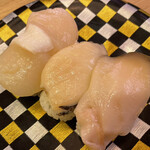
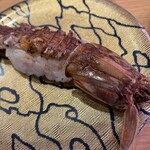



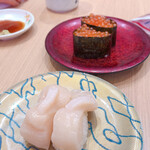
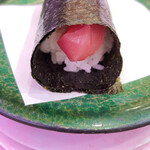

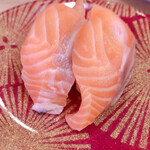
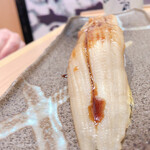

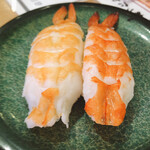
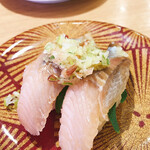
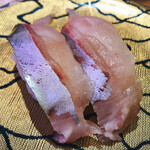
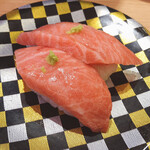
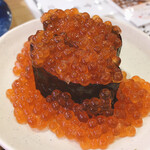

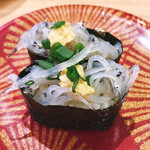
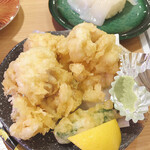
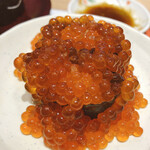
Details
Reservation Info
can be reserved
Payment Method
Cards accepted
(JCB, AMEX, Diners)
Electronic money accepted
Number of Seats
60 seats
Private Dining Rooms
None
Smoking and Non-Smoking
No smoking at the table
Parking
having
Comments
(20)
kokkochan
3.00
When it comes to revolving sushi, I usually go to Fishbe. However, when I went to Hassamu Ion during lunchtime, I decided to try it out. I found out that they offer good quality sushi on their menu. The prices range from 130 yen to 1,000 yen per plate. I didn't want to spend too much money, so I mostly ordered the 130 yen plates. They had options for ordering through tablets or paper, as well as using the lane system. After finishing my meal, I called a staff member to count the number of plates and settle the bill.
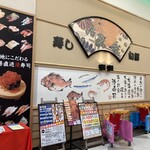

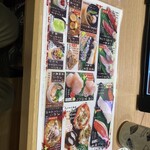
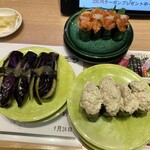
南幌
3.20
Today, I went to a restaurant in Hassamu in search of omurice, but although the restaurant was open, there was no one inside. After waiting for a few minutes, I decided to come back another day. I then went to the Aeon Mall to avoid wandering around, as it was already past 12 o'clock. However, all the popular places were crowded with people waiting in line, except for one place where there were only a few customers and no line. I was seated at the counter and found that the menu items were all quite expensive. I decided to order a plate of surf clam sushi and some other items. When the food arrived after a short wait, I was disappointed by the small portion of the surf clam and the lack of freshness in the fish. The salmon and tuna were also lacking in thickness. I decided to order two more plates before leaving the restaurant. By using a 200 yen discount coupon I got from adding the restaurant as a friend on Line, the total bill came to 1,120 yen. Overall, I felt that this restaurant was not a casual option for a weekday lunch. It's a bit sad to see that the quality has declined over the years since the restaurant first opened in Sapporo almost 30 years ago.



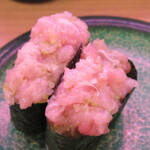
えぞむらさき
3.50
The tablet for ordering is large and very easy to read! Despite being crowded at 3:30, we only had to wait for 2 groups before being seated. ★Seafood Jewel Battleship: A battleship with various ingredients mixed in. According to my husband, it's recommended to go near closing time as the ingredients become more luxurious, so they say, "If no more customers are coming, just put it all in." ★Ara Soup: Delicious and consistent no matter when you eat it, and you get your veggies too. ★Fresh Watermelon Jelly: The Blood Orange Smoothie at Nagoyatei is also very delicious, but I love watermelon. It's normally tasty, but I was thinking that the crunchy texture couldn't be replicated, but then I found lots of diced watermelon inside, and it was delicious. Thank you for the meal!
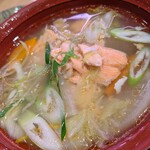
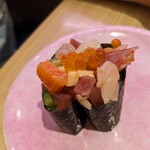
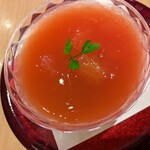

B'z@love.am
3.50
Located on the first floor of the AEON Hakodate store in the Hakodate area, this chain of conveyor belt sushi restaurants has its main store in Kushiro. I had dinner here as I was shopping at AEON. It's a popular restaurant, and I've seen long lines during lunchtime, but it was relatively empty during the evening, so we were seated in about 20 minutes. The restaurant has counter seats and booth seats, with a bright and lively atmosphere. The staff were polite and welcoming. Due to the pandemic, the sushi doesn't go around on a conveyor belt, so you order using a tablet. They have a wide variety of menu items, from classics to limited-time specials and non-sushi options, making it hard to choose. We ordered a variety of items, and they were all delicious, but as a crab lover, I especially enjoyed the "Sushi Restaurant's Crab Soup (460 yen excluding tax)" which had a rich crab flavor. The prices are a bit higher compared to budget conveyor belt sushi chains like 100-yen sushi, but the quality of the sushi is high. Personally, I think the taste surpasses the price, so it's a good option when you want to enjoy delicious conveyor belt sushi.

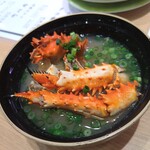


itach188
3.70
I heard there was a sushi restaurant inside the Ion Mall. The location was not very tourist-friendly, but since I was already there, I decided to check it out. There were already many people waiting in line, so I got a ticket and waited for about 15 minutes before being seated. When I looked at the ordering panel inside the restaurant, I noticed that many of the recommended items were already sold out, even though it was not yet 1 o'clock.
- Salmon head soup with salt base: A bit salty, but lots of ingredients.
- Chawanmushi: With naruto, shiitake mushrooms, shrimp, and sweet chestnuts at the bottom. A nice dish for a break.
- Shellfish platter: Abalone was a bit tough, scallop was delicious, and the surf clam was flavorful.
- Abalone liver gunkan: Surprisingly tender and tasty, with a hint of yuzu pepper.
- Salmon and grated daikon salad: The best dish of the day, with oily salmon, grated daikon, and salmon roe.
- Seared salmon with salted butter: Crunchy salt, but the butter flavor was overpowering.
- Tobiuo and white fish (forgot the name): A mix of white fish and green onions, a bit watery and disappointing.
Each piece of sushi was quite large, so I ended up feeling very full. If I had more room in my stomach, I would have liked to try more dishes, especially the salmon and grated daikon salad again.

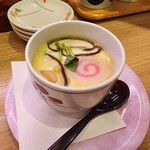


Hanyu14
3.00
I visited for lunch on a regular day. This conveyor belt sushi restaurant is located in the AEON mall managed by Mitsuboshi Restaurant System. It's always popular, with people waiting for tables, but luckily I was able to sit at the counter without waiting. The sushi was rotating on the lane with chefs behind it, and there was also a touch panel where you could order and have it automatically delivered to you. There are 60 seats at the counter and tables. It's not cheap, but I enjoyed delicious sushi. Thank you for the meal.
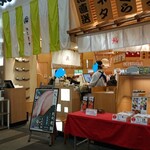


めんたいし
4.00
I visited this restaurant because it often ranks high in the revolving sushi rankings. It is located away from the city center, so it is crowded with locals rather than tourists. The staff is cheerful and the atmosphere is great. The sushi, which is the main point, is ordered through a touch panel and comes on a bullet train, so it is very fresh. The one-piece eel sushi with yuzu pepper was excellent. I tried it for the first time and the yuzu pepper added a nice accent to it. The Hakkō Ion store is also close to the station, so I recommend it to tourists.

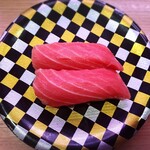

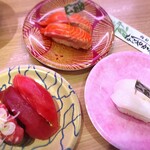
deion388
3.40
My family came to visit from Tokyo, so we decided to start with sushi and went to Nagoyaka-tei. We arrived after 7:30 pm, so the restaurant was not crowded and we were seated right away. The Shimaji (striped jack) was already sold out, but there were no other items sold out, so we enjoyed our meal without any issues. The freshness of each piece of sushi impressed my family, especially compared to what they are used to in Tokyo. I noticed that there was no sea urchin (uni) on the menu, showing that the influence of Tokyo cuisine is still strong.
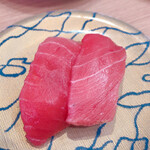


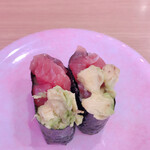
deion388
3.20
After work, I felt like eating sushi and visited Nagoyakatei for the first time in a while. It was a bit late, but the restaurant was quite busy. Today, I had white fish, sweet shrimp, winter sardine, yellowtail, fatty tuna, overflowing salmon roe, squid, steamed shrimp (a classic), and standing tempura until my appetite was satisfied!




deion388
3.30
After finishing work, I decided to have dinner with a junior colleague from work. Since I had a heavy lunch, I wanted to eat something light, so we stopped by Nagoyakatei in Aeon. It was a bit crowded as it was past 6 pm, but we were seated after a 5-minute wait. We started with herring, followed by horse mackerel, fresh saury, salmon, sea urchin, and salmon roe, and finished with a California roll. The standout dish of the day was the horse mackerel. It was delicious with a good amount of fat.



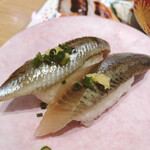
♪よよよ♪
3.50
We stopped by the Hakkou Ion for some shopping and had dinner with my boyfriend. We ordered the seasonal cherry trout, which was nicely fatty and luxurious. The sushi was delivered on a conveyor belt, which was effective for infection prevention but felt a bit lacking in atmosphere. Other sushi selections were also satisfying. For soup, I chose the clam soup with a dashi and yuzu flavor, which was very delicious.

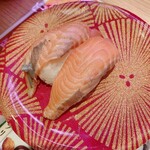
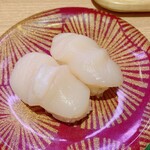
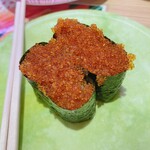
aritan1201
4.50
The 3-piece sushi set is a great deal and I always order it! It's also great when you want to try a variety of things!! I love sushi so I go there often\(^o^)/ It's located inside Aeon so it's convenient to stop by while shopping! The fruit jelly dessert is also delicious!
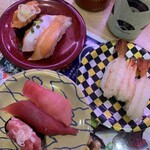
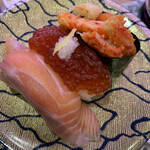
超大食漢
3.50
Arrival in Sapporo the next morning. As usual, it's breakfast with the delicious seafood of Hokkaido, but after exploring the Nijo Market and the surrounding outdoor markets to a certain extent, all that's left are the overpriced tourist-targeted sushi restaurants that rival Tsukiji, so I decided to visit this local revolving sushi chain that seems to be popular among locals, after patiently waiting until their opening at 11 am. I sat down and immediately started using the touch panel. I ordered the steamed egg custard and soup that had a note saying it would take a little longer to prepare. Then, I carefully considered my main sushi order while referring to the recommended and limited menu items on the table. However, upon closer inspection, I noticed that there were also "Nagasaki-produced" and "Kagoshima-produced" items, which were traps for me as I was looking for Hokkaido-produced items. I carefully selected my menu items while avoiding these traps. There was even something called "Funka Bay-produced". I thought I was good at geography, but I had never heard of Funka Bay. I quickly searched the net while operating the tablet, realizing that the operation of this chain's tablet ordering system was extremely poor compared to other chains I had used before. The lack of proper categorization, inconsistent design and layout, and overall difficulty in use made it a struggle. As I was struggling with the tablet, the steamed egg custard and soup were served. Exhausted, I finally placed my order. After ordering, I double-checked my order, but while I could confirm the order, the prices were not displayed. What kind of sense do the digital and marketing staff at the headquarters have? From here, the sushi arrived mechanically on the conveyor belt, one after the other. All the dishes arrived in no time, and I started eating after taking a picture. As I enjoyed the unique sushi, including those typical of Hokkaido, I felt a slight dissatisfaction. I thought about it and realized that there seemed to be a lack of wasabi. Maybe it's because it's family-friendly, but since you can also order sushi without wasabi, I wished there was a bit more of a kick with wasabi. When I checked the tablet again, I saw a note like the one in the photo. Maybe it's my fault for not reading it properly, but this initial setting is just not right. "Menu items with the wasabi-free icon have wasabi by default, while those without the icon are default wasabi-free." It's confusing. They should either unify the default settings or set a wasabi-included/excluded selection button for all menu items. I couldn't tell which items had wasabi included or not in my order, and no matter what I ate, there was hardly any hint of wasabi flavor. In the end, I had to pour a large amount of wasabi from the table onto the soy sauce to finally get the usual sushi flavor. And for payment, you had to press the call tab on the tablet again, and when you did, a staff member would come to check the plates and issue a receipt, which you then take to the cashier. It seemed like they were not fully utilizing the tablet for operations. Also, the area in front of the cashier had markings for social distancing, but it clearly obstructed the flow of customers and staff. The sushi was good, but the inconsistent management bothered me until the end.
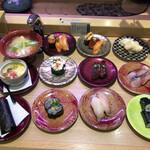
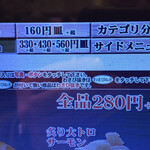
尼chibi
3.50
I have visited Sapporo a few times, but I have only been to famous stores around Sapporo Station. I heard that many locals recommend Nagoyakatei, so I wanted to visit at least once! Three adults visited around noon on a weekday, just after 12 o'clock. We were able to get seats at the last minute. There is a wide variety of sushi toppings, and it's hard to choose from the many recommended toppings of the day. It's probably a staple, right? Like the ●● three pieces. There were Hokkaido three pieces and crab three pieces. There was also something like miso-glazed eggplant. Everything was delicious. I ate quite a bit, but the prices were not too cheap or too expensive. (I was treated, but) I would like to come back again.
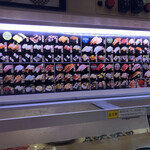
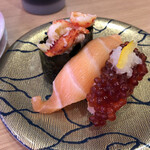


takehirokun3chan
3.50
There are not many cheap conveyor belt sushi restaurants in Hokkaido, but on the other hand, there are many delicious sushi restaurants that offer fresh ingredients, albeit at slightly higher prices. Nagoyakatei, which I visited this time, is one of those conveyor belt sushi restaurants in Hokkaido. It was my last day in Hokkaido, and I wanted to order sushi that was typical of the region, but unfortunately, there weren't many options available. Despite this disappointment, I was very satisfied because the standard sushi items such as shrimp, salmon, and tuna were tastier than those offered at conveyor belt sushi restaurants in Tokyo at the same price. This branch is located inside an Aeon mall, and it is usually very crowded with customers returning from shopping. However, this time, due to the impact of the coronavirus, it was not as crowded, and I was able to enter right away. I left the restaurant hoping that it would soon return to its usual bustling atmosphere.
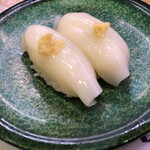
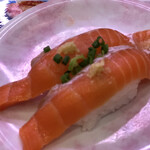
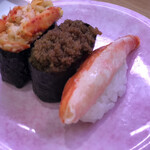
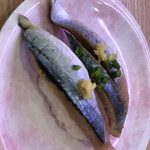
りゅーとりあ
3.80
"Sushi restaurant Nagoyakatei at Aeon Mall Sapporo Hassamu store. We decided to have lunch on a holiday while waiting for my daughter to shop at Aeon. We arrived around 12:00 on Saturday and luckily got seated without waiting in line. We ordered from a touch panel at a box seat, which was a bit impersonal, but since we were seated quickly, we didn't mind. We ordered Salmon 3-piece assortment, Shellfish assortment, Crabmeat battleship, Salmon with grated radish, Fatty Salmon, Seared Mackerel, Surf clam battleship, Thick-cut Horse Mackerel, Natural Tuna, Salmon, Mackerel, Horse Mackerel and Myoga Hand Roll, and Zangi. Everything we tried was delicious, especially the Salmon and Surf clam battleship. Although there are many popular conveyor belt sushi restaurants in Sapporo, personally, I think Nagoyakatei is the best. If you're looking for a delicious and affordable sushi place in town, I highly recommend this place. Once again, thank you for the delicious meal!"
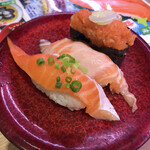
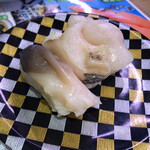
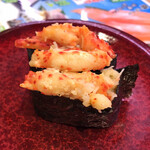
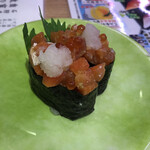
akane.s
3.30
I went to Hassamu Ion, so I went there. It's summer vacation, but I went around 3 pm, so I was able to enter without waiting. Sushi comes zooming in on a touch panel and rails, so it's exciting. I'm not sure if it's good or bad that you can't see where it's being made. I realized I'm the type who wants to see where the sushi is being made even at a conveyor belt sushi restaurant. The taste is the same as other stores, with the reliable quality of Nagoyaka-tei.

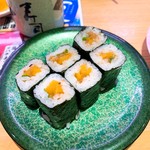

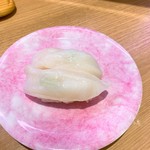
Lee-y
3.50
Eating alone is convenient with a touch screen. I don't have much time, so solo lunches are convenient. The chawanmushi is the type without sweetness. I like chawanmushi with sweetness, so it's a bit strange (laughs). I haven't eaten enough to say "the food is..." but the shimesaba was delicious.
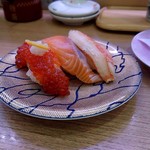

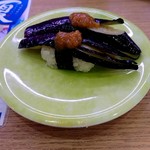

taro-uchi
4.00
The well-known sushi restaurant Nagoyaka-tei is always crowded, with two locations nearby. The Ion Mall branch has a ticket machine and even offers phone notifications, allowing you to explore the mall while waiting. There are two types of seating: counter or booth, with dishes either handed to you or delivered on a rail. The taste is noticeably better than other places, but prices are a bit high. With some planning, you can enjoy high-quality sushi at a relatively affordable price. Just be prepared for long lines.
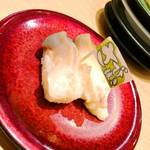
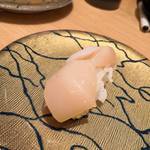
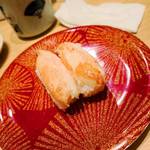
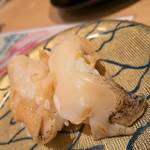
スカクー
3.10
Hokkaido - fresh sardines, Ehime - amberjack, Kagoshima - mackerel, Hokkai 3-point assortment (salmon roe, raw salmon, snow crab), famous overflowing salmon roe too salty, Hokkaido - fresh scallops, Ehime - conger eel, famous overflowing sweet shrimp, Kagoshima - striped jack, fermented squid with natto, live octopus 4000. I used to think Nagoyaka Tei was not bad, but it was a miss this day.

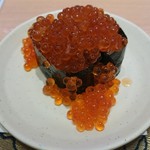

Email Login